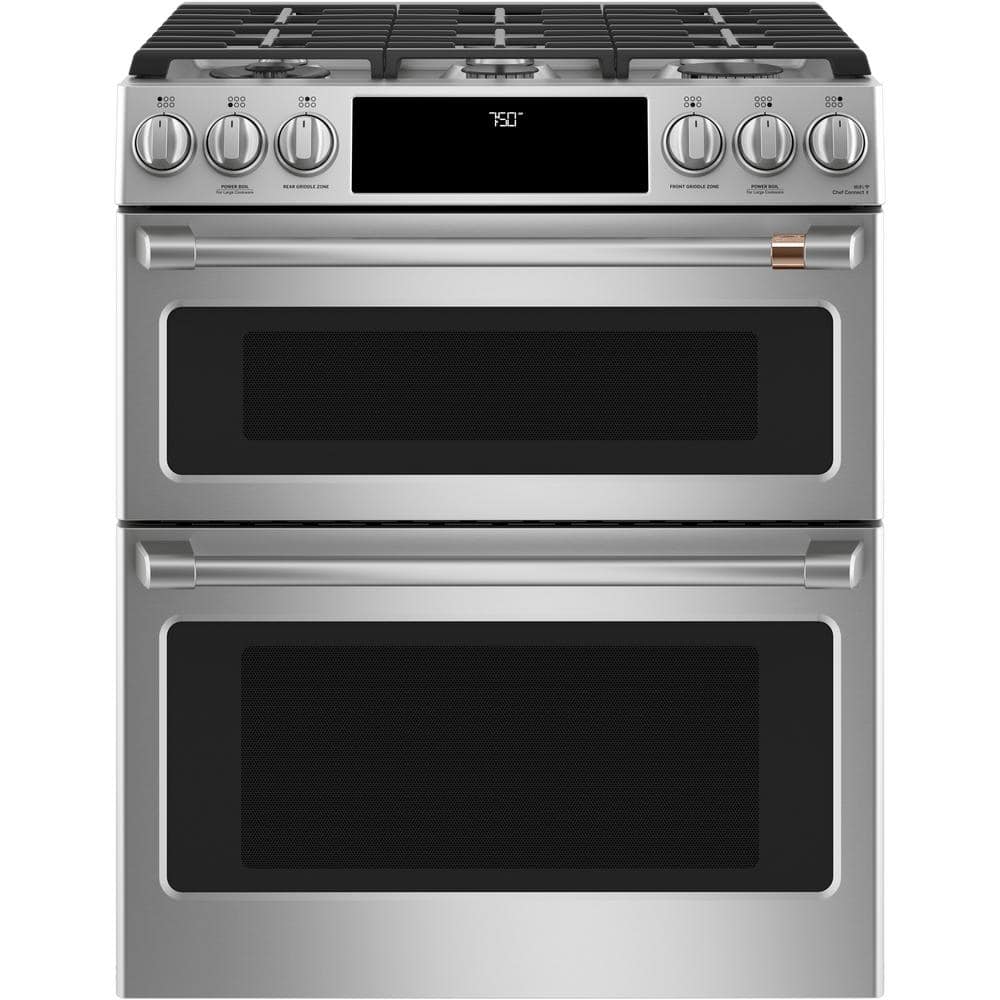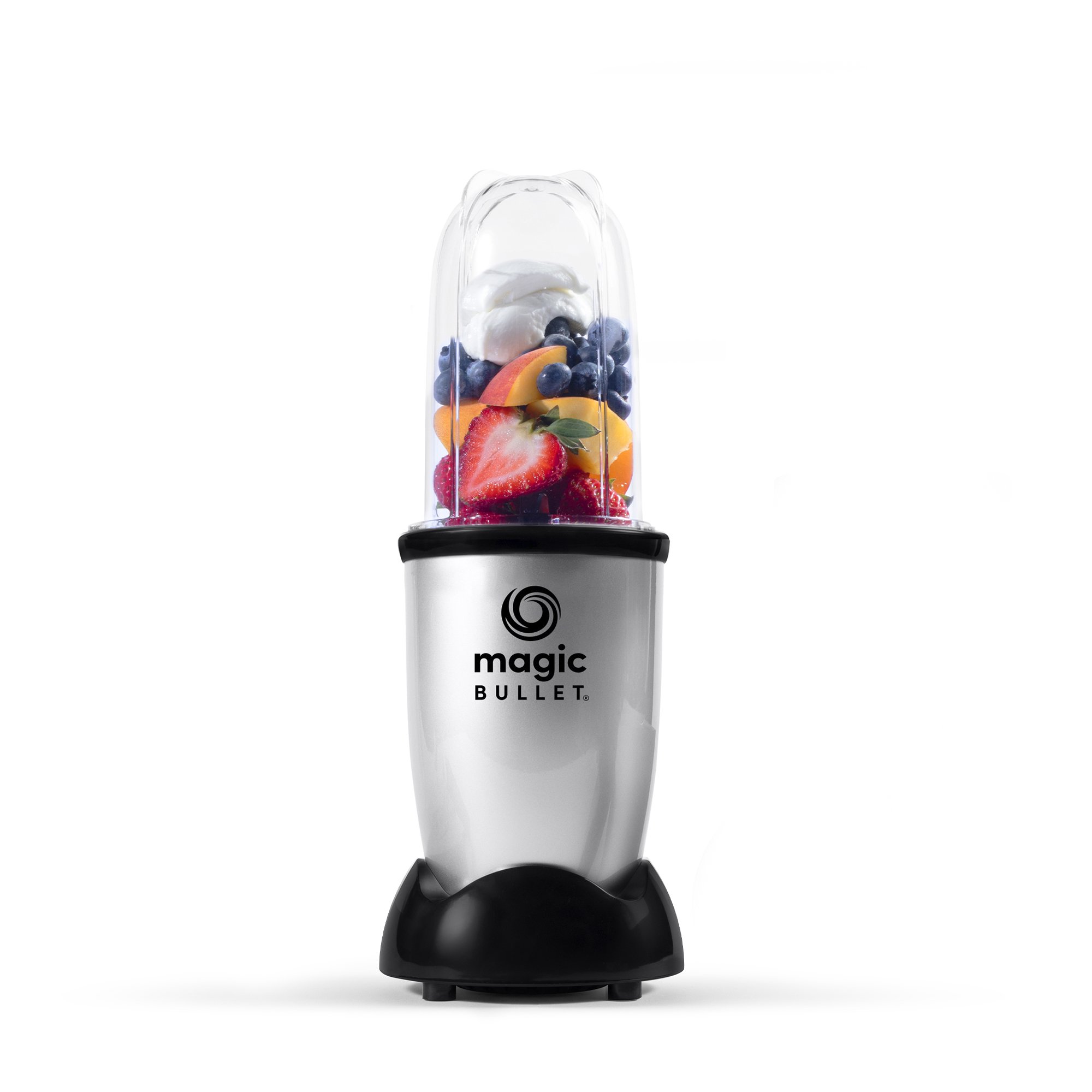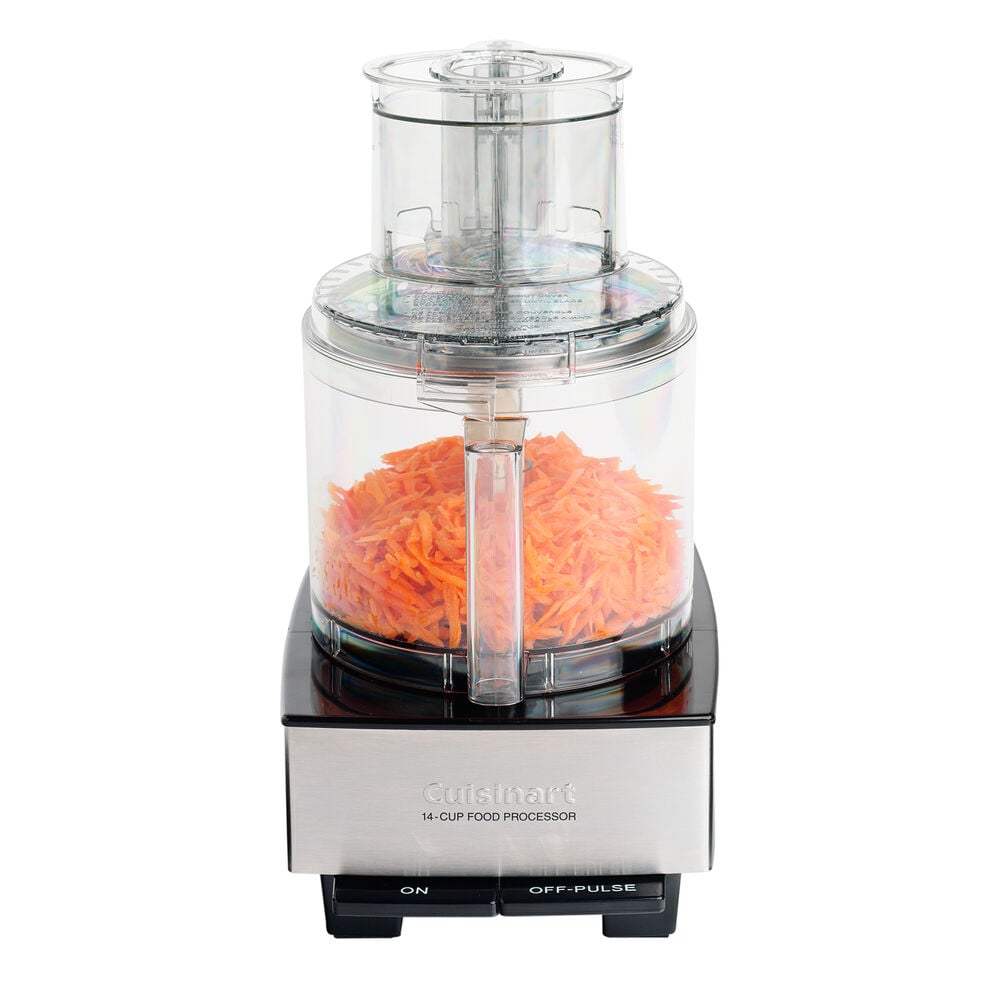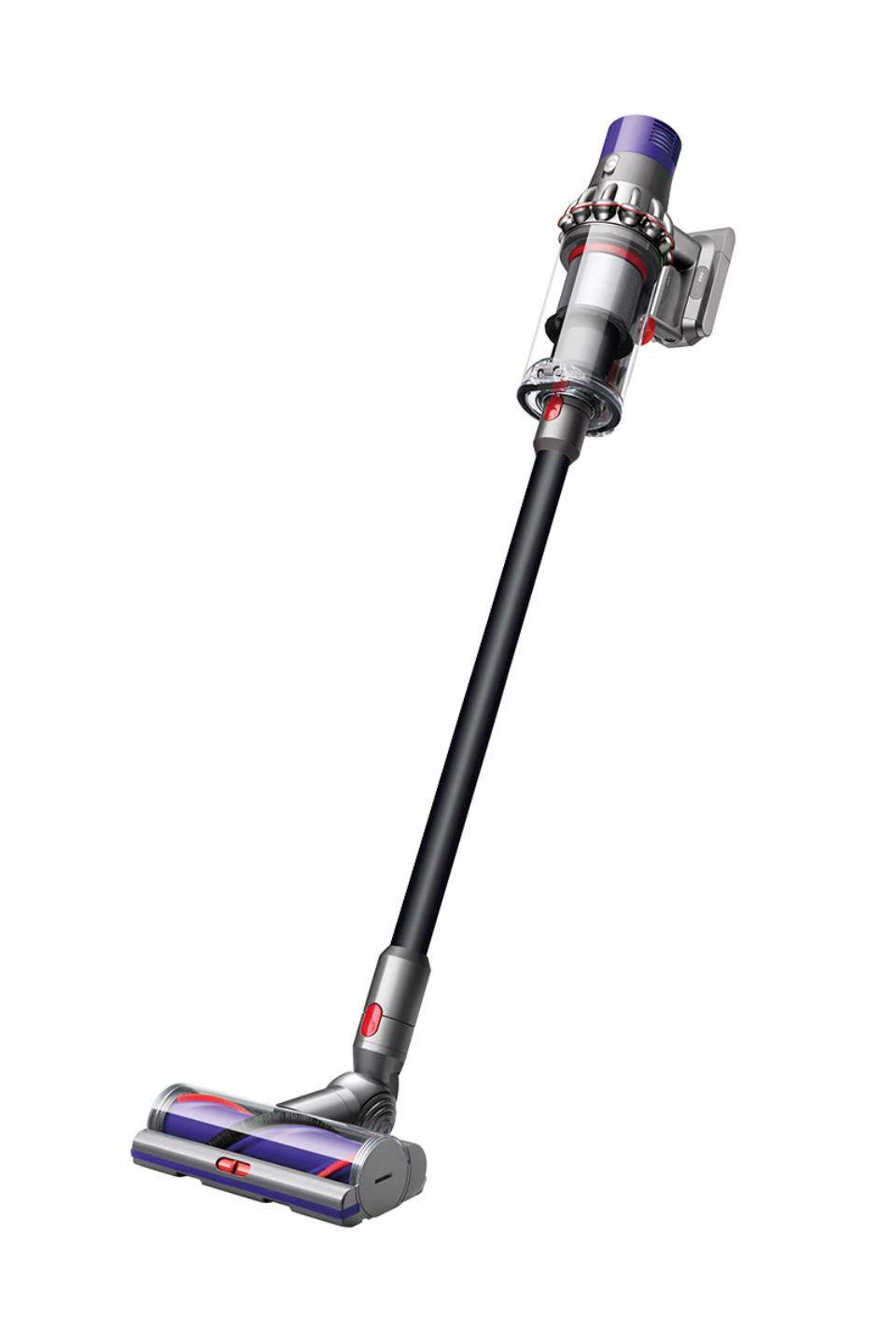Cafe 30 in. 7.0 cu. ft. Smart Slide-In Double-Oven Gas Range with Self-Cleaning and Lower Convection Oven in Stainless Steel
-
( 7 Reviews )Rated 4.71 out of 5 based on 7 customer ratings07
Edge-to-edge cooktop for cooking with pots and pans of all sizes. Wirelessly control oven functions from your smartphone. 21,000 BTU tri-ring burner produces fast, intense heat.
-
Magic Bullet Essential Personal Blender, Silver
Rated 4.50 out of 508Magic Bullet Essential Personal Blender, Silver
Rated 4.50 out of 508 -
Cuisinart 14-Cup Food Processor
Rated 4.89 out of 509Cuisinart 14-Cup Food Processor
Rated 4.89 out of 509 -
Dyson Cyclone V10 Absolute Cordless Vacuum Cleaner (Black)
Rated 5.00 out of 512Dyson Cyclone V10 Absolute Cordless Vacuum Cleaner (Black)
Rated 5.00 out of 512
One look at the Cafe kitchen and you’ll feel as if you’ve been transported behind the scenes of your favorite casual dining experience. Each appliance has been meticulously designed to create an atmosphere where people like to gather and love to cook. Tough stainless steel and powerful elements complement their robust appearance.
- Create dinners and desserts at the exact same time – From everyday gourmet meals to large dinner parties, achieve impressive results with two independent ovens with a total capacity of 7.0 cu. ft. for true cooking flexibility, along with the accurate heat circulation of True European Convection with Precise Air in the lower oven
- An attractive appearance at all times – Every detail of your kitchen is designed to delight, thanks to a sleek backlit glass touch control panel that visually disappears when not in use and wakes up when prompted
- Enjoy total control in the kitchen and beyond – Control your oven with your smart device or simply your voice using Wi-Fi Connect
- Expansive six-burner cooktop helps you entertain with ease – Entertaining for large groups is easy with the industry’s first six burner, edge-to-edge cooktop that can accommodate cookware of all sizes and a cast-iron integrated griddle that provides enough room to perfectly flip crab cakes, arepas and other crowd favorites
- Share favorite creations with your favorite people – Create an unforgettable dinner, using a 21K triple ring burner to do everything from searing scallops to simmering a lemon caper white wine sauce and a 15K power boil burner to boil water quickly for al dente angel hair pasta
- Prepare foods to perfect doneness – Get roasts and meats just right with a temperature probe that lets you monitor progress without opening the oven door
- Create a look that matches your personal style – Select any combination of premium finishes and hardwareoptionsto create a stunning look customized to any owners taste
- Durable racks that make cleaning easy – Easily remove everything from heavy roasts to delicate desserts with self- clean racks that stay in the oven during the self-clean cycle
- Allow your appliances to interact with one another – Create a chef-like experience with Chef Connect, which can synchronize your appliance clocks and surface lights and vent when a range burner is in use, and even your microwave and range clocks
- Choose the range you want with total confidence – When you’re updating your kitchen, attention to detail is a priority. Thats why Cafe 30 slide-in ranges are guaranteed for an exact fit or Cafe Appliances will pay up to $300 toward modifications
- Limited 1-year entire appliance warranty
-
Additional information
| Depth With Door(s) Open 90 Degrees (In.) | 43.875 |
|---|---|
| Lower Oven Interior Depth x Height x Width (in.) | 20.625 x 15 x 24 |
| Product Depth x Height x Width (in.) | 29.5 x 37.38 x 29.88 |
| Range Size (in.) | 30 |
| Upper Oven Interior Depth x Height x Width (in.) | 19.125 x 9.125 x 24 |
| Certifications and Listings | ADA Compliant,UL Listed |
| Manufacturer Warranty | Limited 1-year entire appliance |
0 (zero) is a number representing an empty quantity. Adding 0 to any number leaves that number unchanged. In mathematical terminology, 0 is the additive identity of the integers, rational numbers, real numbers, and complex numbers, as well as other algebraic structures. Multiplying any number by 0 has the result 0, and consequently, division by zero has no meaning in arithmetic.
As a numerical digit, 0 plays a crucial role in decimal notation: it indicates that the power of ten corresponding to the place containing a 0 does not contribute to the total. For example, "205" in decimal means two hundreds, no tens, and five ones. The same principle applies in place-value notations that uses a base other than ten, such as binary and hexadecimal. The modern use of 0 in this manner derives from Indian mathematics that was transmitted to Europe via medieval Islamic mathematicians and popularized by Fibonacci. It was independently used by the Maya.
Common names for the number 0 in English include zero, nought, naught (), and nil. In contexts where at least one adjacent digit distinguishes it from the letter O, the number is sometimes pronounced as oh or o (). Informal or slang terms for 0 include zilch and zip. Historically, ought, aught (), and cipher have also been used.
30 may refer to:
- 30 (number), the natural number following 29 and preceding 31
- one of the years 30 BC, AD 30, 1930, 2030
7 (seven) is the natural number following 6 and preceding 8. It is the only prime number preceding a cube.
As an early prime number in the series of positive integers, the number seven has greatly symbolic associations in religion, mythology, superstition and philosophy. The seven Classical planets resulted in seven being the number of days in a week. 7 is often considered lucky in Western culture and is often seen as highly symbolic. Unlike Western culture, in Vietnamese culture, the number seven is sometimes considered unlucky.
Cleaning is the process of removing unwanted substances, such as dirt, infectious agents, and other impurities, from an object or environment. Cleaning is often performed for aesthetic, hygienic, functional, safety, or environmental protection purposes. Cleaning occurs in many different contexts, and uses many different methods. Several occupations are devoted to cleaning.
Convection is single or multiphase fluid flow that occurs spontaneously due to the combined effects of material property heterogeneity and body forces on a fluid, most commonly density and gravity (see buoyancy). When the cause of the convection is unspecified, convection due to the effects of thermal expansion and buoyancy can be assumed. Convection may also take place in soft solids or mixtures where particles can flow.
Convective flow may be transient (such as when a multiphase mixture of oil and water separates) or steady state (see Convection cell). The convection may be due to gravitational, electromagnetic or fictitious body forces. Heat transfer by natural convection plays a role in the structure of Earth's atmosphere, its oceans, and its mantle. Discrete convective cells in the atmosphere can be identified by clouds, with stronger convection resulting in thunderstorms. Natural convection also plays a role in stellar physics. Convection is often categorised or described by the main effect causing the convective flow; for example, thermal convection.
Convection cannot take place in most solids because neither bulk current flows nor significant diffusion of matter can take place. Granular convection is a similar phenomenon in granular material instead of fluids. Advection is fluid motion created by velocity instead of thermal gradients. Convective heat transfer is the intentional use of convection as a method for heat transfer. Convection is a process in which heat is carried from place to place by the bulk movement of a fluid and gases.
Gas is one of the four fundamental states of matter. The others are solid, liquid, and plasma. A pure gas may be made up of individual atoms (e.g. a noble gas like neon), elemental molecules made from one type of atom (e.g. oxygen), or compound molecules made from a variety of atoms (e.g. carbon dioxide). A gas mixture, such as air, contains a variety of pure gases. What distinguishes gases from liquids and solids is the vast separation of the individual gas particles. This separation usually makes a colorless gas invisible to the human observer.
The gaseous state of matter occurs between the liquid and plasma states, the latter of which provides the upper-temperature boundary for gases. Bounding the lower end of the temperature scale lie degenerative quantum gases which are gaining increasing attention. High-density atomic gases super-cooled to very low temperatures are classified by their statistical behavior as either Bose gases or Fermi gases. For a comprehensive listing of these exotic states of matter, see list of states of matter.
Lower may refer to:
- Lower (surname)
- Lower Township, New Jersey
- Lower Receiver (firearms)
- Lower Wick Gloucestershire, England
An oven is a tool which is used to expose materials to a hot environment. Ovens contain a hollow chamber and provide a means of heating the chamber in a controlled way. In use since antiquity, they have been used to accomplish a wide variety of tasks requiring controlled heating. Because they are used for a variety of purposes, there are many different types of ovens. These types differ depending on their intended purpose and based upon how they generate heat.
Ovens are often used for cooking, where they can be used to heat food to a desired temperature. Ovens are also used in the manufacturing of ceramics and pottery; these ovens are sometimes referred to as kilns. Metallurgical furnaces are ovens used in the manufacturing of metals, while glass furnaces are ovens used to produce glass.
There are many methods by which different types of ovens produce heat. Some ovens heat materials using the combustion of a fuel, such as wood, coal, or natural gas, while many employ electricity. Microwave ovens heat materials by exposing them to microwave radiation while electric ovens and electric furnaces heat materials using resistive heating. Some ovens use forced convection, the movement of gases inside the heating chamber, to enhance the heating process, or, in some cases, to change the properties of the material being heated, such as in the Bessemer method of steel production.
In philosophy, the self is an individual's own being, knowledge, and values, and the relationship between these attributes.
The first-person perspective distinguishes selfhood from personal identity. Whereas "identity" is (literally) sameness and may involve categorization and labeling, selfhood implies a first-person perspective and suggests potential uniqueness. Conversely, "person" is used as a third-person reference. Personal identity can be impaired in late-stage Alzheimer's disease and in other neurodegenerative diseases. Finally, the self is distinguishable from "others". Including the distinction between sameness and otherness, the self versus other is a research topic in contemporary philosophy and contemporary phenomenology (see also psychological phenomenology), psychology, psychiatry, neurology, and neuroscience.
Although subjective experience is central to selfhood, the privacy of this experience is only one of many problems in the philosophy of self and scientific study of consciousness.
Stainless may refer to:
- Cleanliness, or the quality of being clean
- Stainless steel, a corrosion-resistant metal alloy
- Stainless Games, a British video game developer
- Stainless Broadcasting Company, a TV broadcaster based in Michigan, US
- Stainless Banner, the second national flag of the Confederate States of America
Steel is an alloy of iron and carbon with improved strength and fracture resistance compared to other forms of iron. Because of its high tensile strength and low cost, steel is one of the most commonly manufactured materials in the world. Steel is used in buildings, as concrete reinforcing rods, in bridges, infrastructure, tools, ships, trains, cars, bicycles, machines, electrical appliances, furniture, and weapons.
Iron is always the main element in steel, but many other elements may be present or added. Stainless steels, which are resistant to corrosion and oxidation, typically need an additional 11% chromium.
Iron is the base metal of steel. Depending on the temperature, it can take two crystalline forms (allotropic forms): body-centred cubic and face-centred cubic. The interaction of the allotropes of iron with the alloying elements, primarily carbon, gives steel and cast iron their range of unique properties. In pure iron, the crystal structure has relatively little resistance to the iron atoms slipping past one another, and so pure iron is quite ductile, or soft and easily formed. In steel, small amounts of carbon, other elements, and inclusions within the iron act as hardening agents that prevent the movement of dislocations.
The carbon in typical steel alloys may contribute up to 2.14% of its weight. Varying the amount of carbon and many other alloying elements, as well as controlling their chemical and physical makeup in the final steel (either as solute elements, or as precipitated phases), impedes the movement of the dislocations that make pure iron ductile, and thus controls and enhances its qualities. These qualities include the hardness, quenching behaviour, need for annealing, tempering behaviour, yield strength, and tensile strength of the resulting steel. The increase in steel's strength compared to pure iron is possible only by reducing iron's ductility.
Steel was produced in bloomery furnaces for thousands of years, but its large-scale, industrial use began only after more efficient production methods were devised in the 17th century, with the introduction of the blast furnace and production of crucible steel. This was followed by the Bessemer process in England in the mid-19th century, and then by the open-hearth furnace. With the invention of the Bessemer process, a new era of mass-produced steel began. Mild steel replaced wrought iron. The German states were the major steel producers in Europe in the 19th century. American steel production was centered in Pittsburgh, Bethlehem, Pennsylvania, and Cleveland until the late 20th century.
Further refinements in the process, such as basic oxygen steelmaking (BOS), largely replaced earlier methods by further lowering the cost of production and increasing the quality of the final product. Today more than 1.6 billion tons of steel is produced annually. Modern steel is generally identified by various grades defined by assorted standards organisations. The modern steel industry is one of the largest manufacturing industries in the world, but also one of the most energy and greenhouse gas emission intense industries, contributing 8% of global emissions. However, steel is also very reusable: it is one of the world's most-recycled materials, with a recycling rate of over 60% globally.






by Rolf
We installed this in our 1250 sq ft home. No room for 2 full size ovens so we thought this would work well and it does. There are many times we need to cook dishes that need to be at 2 temperatures, i.e., fish sticks and tater tots, or we can cook in one and use the other as a warming oven. The upper (smaller) oven does appear to run a bit hotter towards the back of the unit. I sometimes turn whatever I am cooking around to balance this out. Biggest drawback is that I haven’t been able to find the trim kit. It has been sold out since we bought this unit.
by Jill
I was so excited to add this to my kitchen because it’s so beautiful, but was very pleasantly surprised to experience a very functional range as well! Heats quickly & evenly, fun features, and of course looks amazing. VERY pleased with this product!
by Susan
I replaced a double oven I purchased 15 years ago. I did the research since I wanted to continue with the double oven. But I also wanted to add extra burners. The stove has six burners some awesome features. It also came with an app which is really cool. I can remote start my oven from anywhere in the world. So it’s warm when I’m ready to go in. Would definitely recommend if you can afford it little pricey though.
by Gayle
I have only had the Cafe range for a couple of weeks but have already used several of the available options. I NEVER realized what a difference a high end appliance would make. There are several excellent cooks in our family and they are all jealous and in awe after spending time at my home and using the new range.
by Alfa
I like it the only down fall is that it’s not easy to clean.
by Pondo
WE had it 6 weeks and on of the oven has already gone out.
by Tanner
Been using this burner for a month to cook all of our food as we wait for a microwave to come off back order and it’s been great. Does it’s job and cooks food well. Duel oven is super useful and we love the griddle it comes with for the center burners. Wish there was more safety features for the knobs as we have kids. Also it does not relight the stove burners if the burner goes out like the manual claims. Manual states it will reignite on some models and then follows up with statement that this model will reignite. Not the case, other than that it looks great!